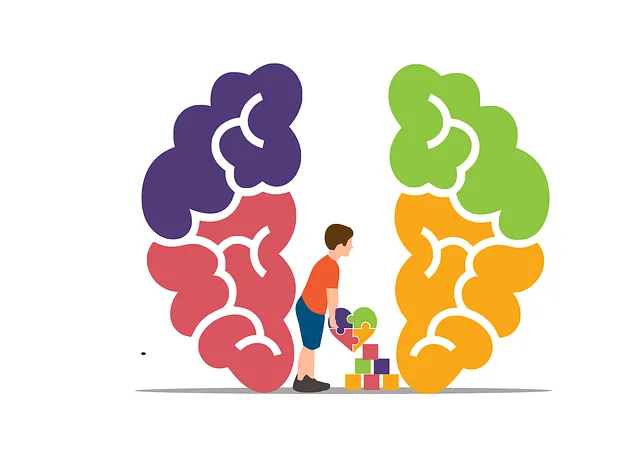Kaiser Permanente Behavioral Health Services Centennial prioritizes safety through comprehensive risk assessment and harm minimization strategies, fostering a supportive environment for self-care and positive mental wellness outcomes. By combining evidence-based practices with proactive interventions like cognitive-behavioral therapy and trauma-informed care, the facility empowers clients to manage emotional challenges effectively. Continuous improvement initiatives, including staff training and community engagement, ensure tailored approaches to complex healing processes, enhancing patient safety and overall well-being.
Risk assessment and harm minimization planning are vital components of creating safe, supportive environments, especially within healthcare settings like Kaiser Permanente Behavioral Health Services Centennial. This article guides readers through a comprehensive approach to understanding risk assessment as a foundational practice for enhancing safety. We explore the development of effective harm minimization plans, offering strategies for implementation and continuous improvement tailored to the unique needs of behavioral health services.
- Understanding Risk Assessment: A Foundation for Safe Practices
- Kaiser Permanente Behavioral Health Services Centennial: An Overview
- Developing a Comprehensive Harm Minimization Plan
- Implementation and Continuous Improvement Strategies
Understanding Risk Assessment: A Foundation for Safe Practices

Risk assessment is a fundamental process that forms the bedrock of safe practices in various sectors, including behavioral health services. Kaiser Permanente Behavioral Health Services Centennial recognizes the significance of this practice in ensuring the well-being and security of individuals seeking support. It involves identifying potential risks, evaluating their likelihood and impact, and implementing strategies to mitigate those risks effectively.
By understanding risk assessment, providers at Kaiser Permanente can create a supportive environment that promotes Self-Care Practices and Stress Reduction Methods. This proactive approach allows for the early identification of issues related to Self-Esteem Improvement, enabling timely interventions. Through rigorous risk assessments, the organization fosters a culture where potential harm is minimized, contributing to positive outcomes for clients and delivering exceptional care in a safe setting.
Kaiser Permanente Behavioral Health Services Centennial: An Overview

The Kaiser Permanente Behavioral Health Services Centennial is a leading provider of mental health and wellness solutions, dedicated to transforming lives through comprehensive care. This renowned facility offers a wide array of services tailored to meet diverse individual needs, focusing on evidence-based practices to promote healing and growth. Their approach integrates various therapeutic modalities, including cognitive-behavioral therapy, mindfulness techniques, and trauma-informed care, ensuring personalized support for each client’s unique journey.
With a strong emphasis on prevention and early intervention, the Centennial program aims to empower individuals with essential skills for self-esteem improvement and emotional regulation. The center provides crisis intervention guidance, offering immediate assistance during challenging times. By fostering a safe and supportive environment, Kaiser Permanente Behavioral Health Services Centennial facilitates meaningful connections and encourages clients to embrace positive changes, ultimately contributing to enhanced overall well-being.
Developing a Comprehensive Harm Minimization Plan

Developing a comprehensive harm minimization plan is an essential step for organizations like Kaiser Permanente behavioral health services Centennial to ensure the well-being and safety of their clients. This process involves careful assessment and strategic planning to identify potential risks and implement effective mitigation strategies. By adopting the Mind Over Matter principles, these services can foster mental wellness among individuals, helping them navigate challenges and promote positive outcomes.
A robust plan should encompass various aspects, including risk identification, resource allocation, staff training, and community engagement. Public awareness campaigns development plays a crucial role in educating people about available resources and reducing stigma associated with seeking help for behavioral health issues. Through collaborative efforts, Kaiser Permanente can create a supportive ecosystem that encourages open dialogue about mental wellness and empowers individuals to make informed decisions regarding their well-being.
Implementation and Continuous Improvement Strategies

At Kaiser Permanente behavioral health services Centennial, implementation and continuous improvement strategies are paramount to enhancing service delivery and ensuring patient safety. Regular reviews and updates to harm minimization plans are essential, incorporating feedback from both patients and healthcare providers. This iterative process allows for adaptive practices that cater to evolving needs, especially in addressing complex emotional healing processes.
Self-esteem improvement is a key area where continuous improvement initiatives can make a significant difference. Through Healthcare Provider Cultural Competency Training, staff gain deeper insights into diverse patient backgrounds, enabling more empathetic interactions. Such training not only strengthens patient-provider relationships but also contributes to more effective interventions, ultimately fostering an environment conducive to emotional well-being and overall healing.
Risk assessment and harm minimization planning are essential components of creating safe practices within healthcare organizations, especially at Kaiser Permanente Behavioral Health Services Centennial. By understanding risk assessment as a foundational step, developing comprehensive plans, and implementing effective strategies, the Centennial can enhance patient safety and improve outcomes. This structured approach ensures that potential risks are identified and managed proactively, fostering an environment where patients receive quality care in a secure setting.






